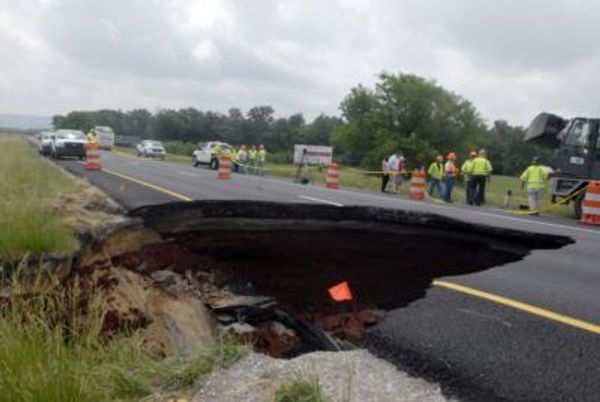
We may not think too hard about the ground when we buy, sell or renovate houses, but there are geological properties underneath our home's foundations that can affect its structural integrity.
Soil types vary across the country and can contribute to a range of issues from small cracks in our walls to serious damage due to ground settlement or subsidence.
There are four types of soils commonly found in Australia - sand, clay, silt and peat. Each soil varies in texture and structure. Sand, for example, consists of soil particles that form loose aggregates that do not form a single structure, limiting the amount of water it can hold.
Clay, on the other hand, is made up of smaller particles that cling together, which ultimately influences the way water can move through its structure.
While sandy soil will allow water to flow freely due to the larger particles, the smaller clay soil particles block this flow and so can be highly reactive.
This means the soil structure changes in volume due to the fluctuating moisture levels, a bit like a sponge, which can result in foundation movement.
Reactive soil changes depending on its moisture content and is impacted by things like the seasonal shift in the weather, nearby bodies of water, or a leaking pipe that may cause the ground to become waterlogged.
When reactive soil swells, it can transfer pressure onto a home's footings or foundation slab, causing the structure to move which in turn can cause doors and windows to jam.
When the soil dries out again, it shrinks, which can undermine the home's structural integrity depending on the severity of movement and cracks may appear in brickwork.
Unfortunately there is often little that can be done about the soil beneath our homes. However, understanding more about the soil conditions can help us make more informed decisions when seeking a solution to address foundation settlement.
In Canberra, for example, soil types range from sandy through to clays. The age, construction and location of a property will further influence its tendency to be impacted by subsidence.
A geotechnical engineer can provide advice on soil types by testing and classifying it based on its propensity to react to moisture.
This provides confidence when making decisions about your home and the relationship between soil types, seasonal behaviour, foundation types, construction methods and building materials.
- Alan Reid is ACT sales and business development manager at Mainmark Ground Engineering
Listen to the Fuzzy Logic Science Show at 11am Sundays on 2XX 98.3FM.
Send your questions to AskFuzzy@Zoho.com Twitter@FuzzyLogicSci







